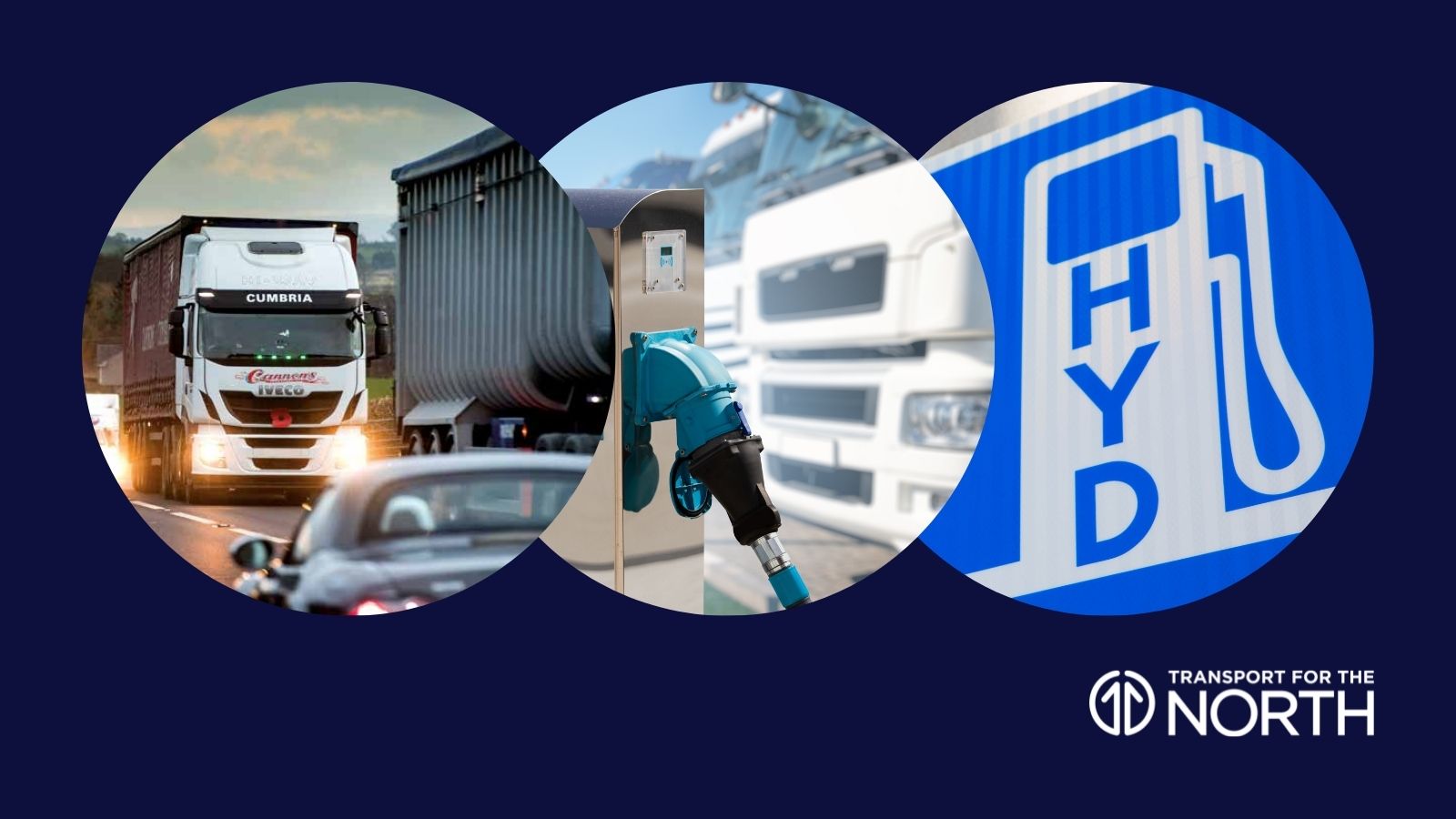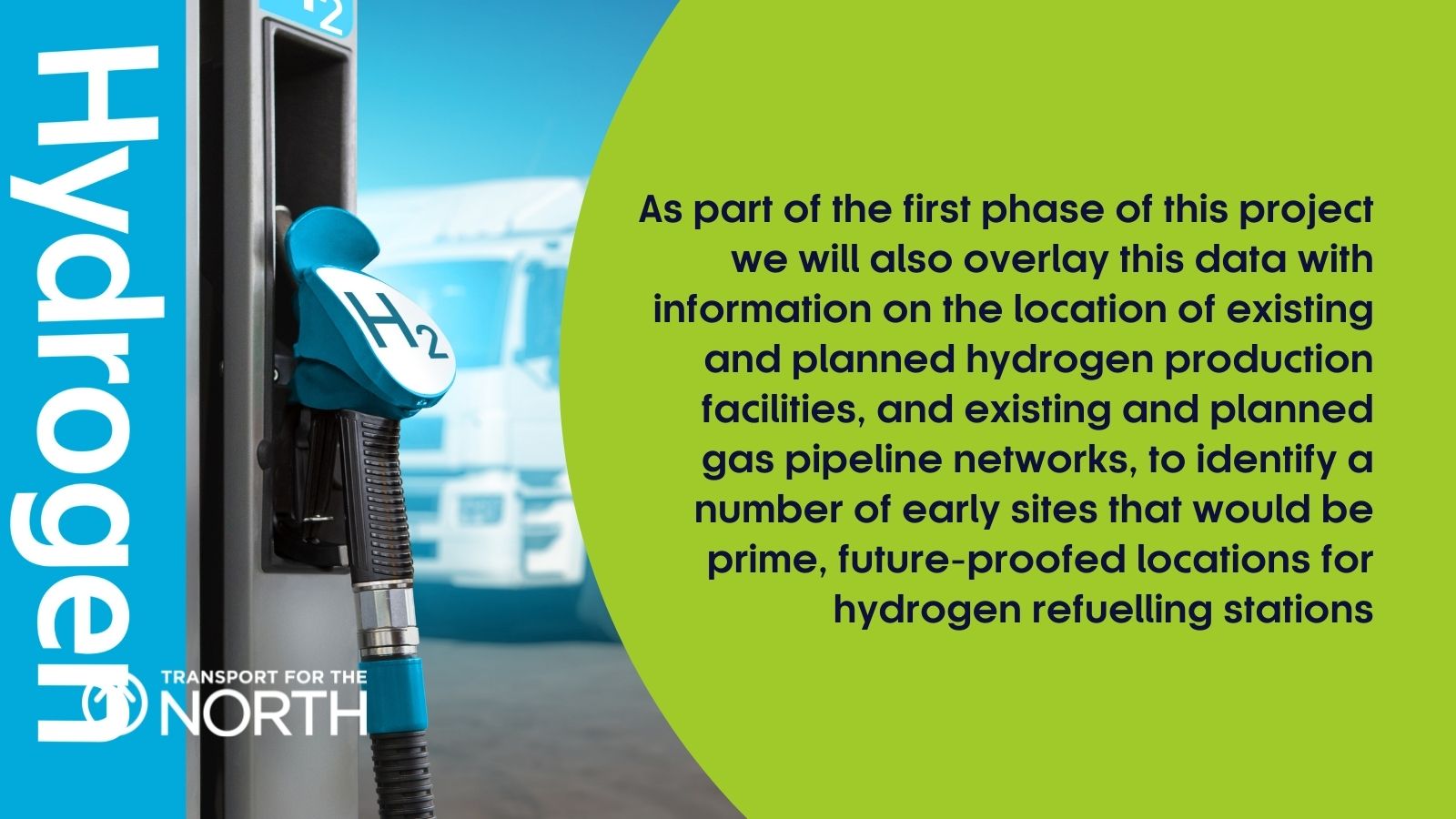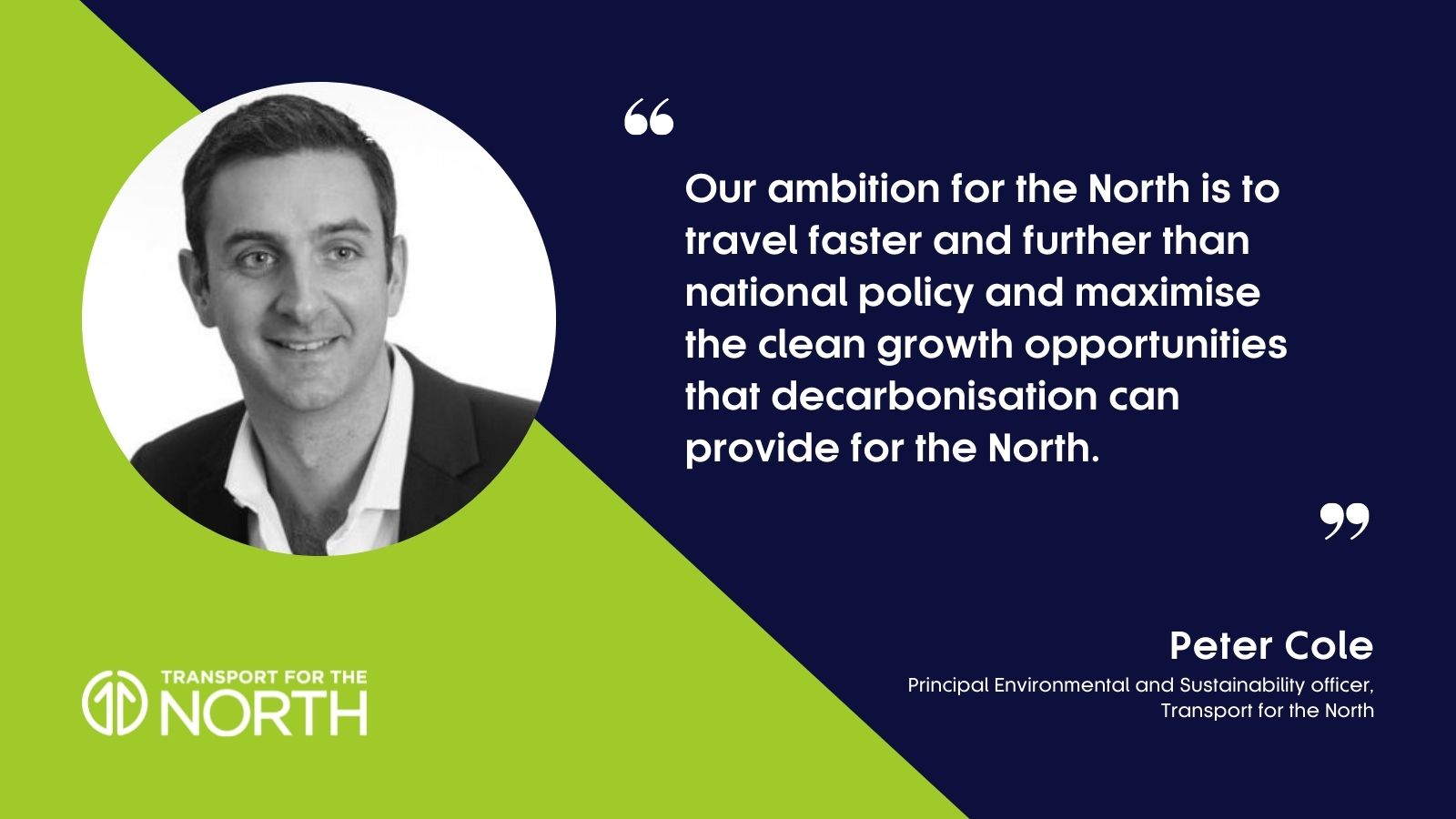Our Principal Environmental & Sustainability Officer, Peter Cole, looks at how we will work with partners to build the evidence that will underpin a sustainable hydrogen refuelling network for the North.
In the UK, surface transport is the largest contributing sector to greenhouse gas emissions, and pre-pandemic, the North alone emitted 25 million tonnes of CO2(e) from surface transport each year, with 28% of those emissions coming from Heavy Goods Vehicles (HGVs).
Transport for the North (TfN) and our partners believe an acceleration towards a zero-carbon transport network, is one of those priorities and must be at the heart of public policy making and investment decisions.
Our ambition for the North is to travel faster and further than national policy and maximise the clean growth opportunities that decarbonisation can provide for the North.
Through our Transport Decarbonisation Strategy, the first regional document of its kind, TfN and our partners have set an ambitious target of a regional near-zero carbon surface transport network by 2045.

An important component in reaching our ambitions will be achieving the HGV zero emission sales share targets over the coming decades. Our modelling shows we need to hit 44% by 2030 and 100% zero-emission HGV sales by 2040. To do this we need to be innovative, and work with our partners and wider stakeholders in the region to evidence the feasibility and benefits of alternative fuels.
To this end, TfN alongside Northern Gas Networks (NGN), has led the formation of a cross-sectoral consortium to develop a Multimodal Hydrogen Transport Refuelling Network study. The study is evaluating the potential for hydrogen’s use in heavy duty transport (HGVs, trains, refuse vehicles and buses) across the North of England, creating a joined-up, regional plan on how to cost-effectively, kick-start the hydrogen economy in the North whilst supporting the growth of zero-emission transport and the repurposing of the gas grid.
Alongside NGN, we were delighted to win funding through the first round of Ofgem’s Strategic Innovation Fund in February 2022. As part of the consortium made up of TfN, NGN, Element Energy, the Network for Hydrogen Transportation (Network-H2), Eversholt Rail and Ryze Hydrogen, our role has been to bring together stakeholders from across the region and provide HGV traffic modelling data, utilising our in-house analytical framework.
The project utilises and further develops the ATHENA (Analysis of a Strategic Hydrogen Refuelling Infrastructure) model, developed by Durham and Heriot Wat Universities under the Network-H2 banner.

The project kicked off by selecting hydrogen vehicle types with promising use cases: high utilisations, challenging duty cycles, heavy loads etc. We are now mapping the centres of concentration for these vehicles such as bus and truck depots, ports, airports and rail depots. Having engaged with both large, local fleet operators and fuel cell electric vehicle OEMs, we will model localised vehicle up-take scenarios.
By combining information on fuel cell vehicle efficiencies and standard vehicle mileages, we have started to convert the vehicle deployments into regionalised hydrogen demands analysing vehicle routes on road, rail and otherwise to identify hydrogen demand hot spots.
As part of the first phase of this project we will also overlay this data with information on the location of existing and planned hydrogen production facilities, and existing and planned gas pipeline networks, to identify a number of early sites that would be prime, future-proofed locations for hydrogen refuelling stations.

Through extensive cross-sectoral stakeholder engagement, we have taken into account information on near and medium-term Northern hydrogen production projects, for example, large-scale electrolysers and reformers with carbon-capture facilities, as well as likely sites for new hydrogen production projects like large wind farms and biomethane plants.
Working with NGN, a key driver of the study is to understand and optimise the potential of the gas grid to deliver hydrogen to high-capacity hydrogen stations compared to incumbent technologies.
Along with the rest of the consortium, we will soon be applying for increased funding from Ofgem’s Strategic Innovation Fund which would allow us to further hone our strategic hydrogen network model (evolved from ATHENA) to identify strategic locations for refuelling. We then plan to grow our work with our identified cross-sectoral stakeholders in preparing for the build-out of one or more high capacity hydrogen refuelling hubs to prove the concept at scale and pave the way for a wider roll-out in the north.